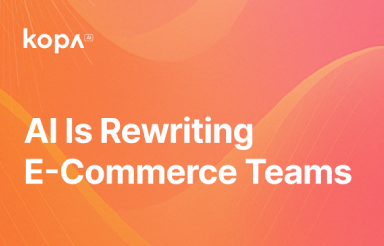The Multi-Tool Trap: Why E-Commerce Agents Need One Brain

Modern e-commerce runs on a messy stack of tools — Shopify for products and orders, Klaviyo for emails, Meta and Google Ads for acquisition, GA4 for analytics, and dozens more for reviews, CRO, and fulfillment.
Each works well in isolation. Together, they form a system that’s powerful but fragmented — where every tool knows part of the story, but none see the whole picture.
That fragmentation is what makes getting AI agents to work in e-commerce so difficult. The challenge isn’t creating smarter models — it’s giving them a shared understanding of how the business actually operates.
The Automation Illusion
Some brands already feel automated. They’ve wired up zaps, flows, and triggers between platforms. But those systems follow rules, not reasoning.
An AI agent should be able to notice when an ad’s CPA goes down, check whether inventory can support scaling, and surface a suggestion to scale, downscale or reorder.
But that kind of cross-functional logic requires more than conditional triggers — it needs a common view of reality that both AI and humans can work from.
Why Multi-Tool Systems Break
Each platform speaks its own language:
- Shopify tracks products and orders
- Meta tracks ads and audiences
- Klaviyo tracks flows and segments
- Google tracks events and conversion values
For an AI system, it’s like talking to several specialists who each hold different facts — but never the full context.
When you ask, “Should we scale this campaign?”, the agent has to:
- Pull performance data from Meta
- Check product availability in Shopify
- Confirm if a restock PO exists
- Evaluate margin and cash flow impact
- Review CX data — refunds, complaints, or delivery delays
That’s not one action; it’s a complex reasoning chain across disconnected systems.
Why One Brain Matters
Real operational intelligence doesn’t come from adding more tools — it comes from one system that unifies them.
When an agent (and the operator behind it) can see across:
- Marketing → what’s converting and at what cost
- Inventory → what’s low, overstocked, or delayed
- Finance → how each move affects cash flow
- Customer Experience → which products cause complaints or refunds
…then every decision becomes coordinated instead of reactive.
Instead of “pause this campaign,” the system can suggest:
“Pause ad spend on SKU #142 — its return rate doubled this week and stock is tight. Let’s trigger a PO and review quality feedback first.”
That’s not replacing the operator — it’s augmenting them with context and foresight.
Why AI Needs Its Own Operating Layer
Even the most capable AI can’t reason effectively if it’s pulling scattered, inconsistent data from multiple APIs.
That’s why modern e-commerce needs an operating layer — a unified data and action framework that gives both humans and AI agents the same real-time view of the business.
When marketing, inventory, CX, and finance data are normalized under one roof, the system can finally think holistically. It can detect trends, surface next-best actions, and recommend moves — while the operator stays in control of what actually happens.
This is what Kopa Intelligence is built to be: the connective brain that turns fragmented tools into a single, guided operation — not by removing people, but by amplifying their decision-making power.
What This Enables
With that shared operating brain, e-commerce teams can finally:
- Connect cause and effect: Ad fatigue → lower CTR → slower conversions → suggest new creatives automatically.
- Anticipate instead of react: Predict stockouts and prep purchase orders early.
- Catch CX risks early: Spot when refund or complaint spikes hint at product issues.
- Act with confidence: Each recommendation is made with full context — and reviewed by a human before execution.
When every system reports to one intelligent layer, e-commerce stops feeling like a collection of apps and starts running like a single, well-coordinated operation.
The Future: One Ops Brain, Many Hands
The next wave of e-commerce isn’t about more apps or more dashboards — it’s about one shared brain that understands the whole business and helps people run it better.
Instead of 20 scattered tools, teams will have one intelligent co-pilot that spots opportunities, surfaces risks, and assists across every channel.
That’s not full automation — it’s intelligent collaboration.
And that’s the future Kopa AI is building: one brain, many hands, human at the center.

From the blog

Why AI Is Critical For Ad Creation?

The Multi-Tool Trap: Why E-Commerce Agents Need One Brain

How AI Agents Will Reshape E-Commerce Teams

The Age of Agentic Commerce: How AI Will Decide Which Products Get Seen


